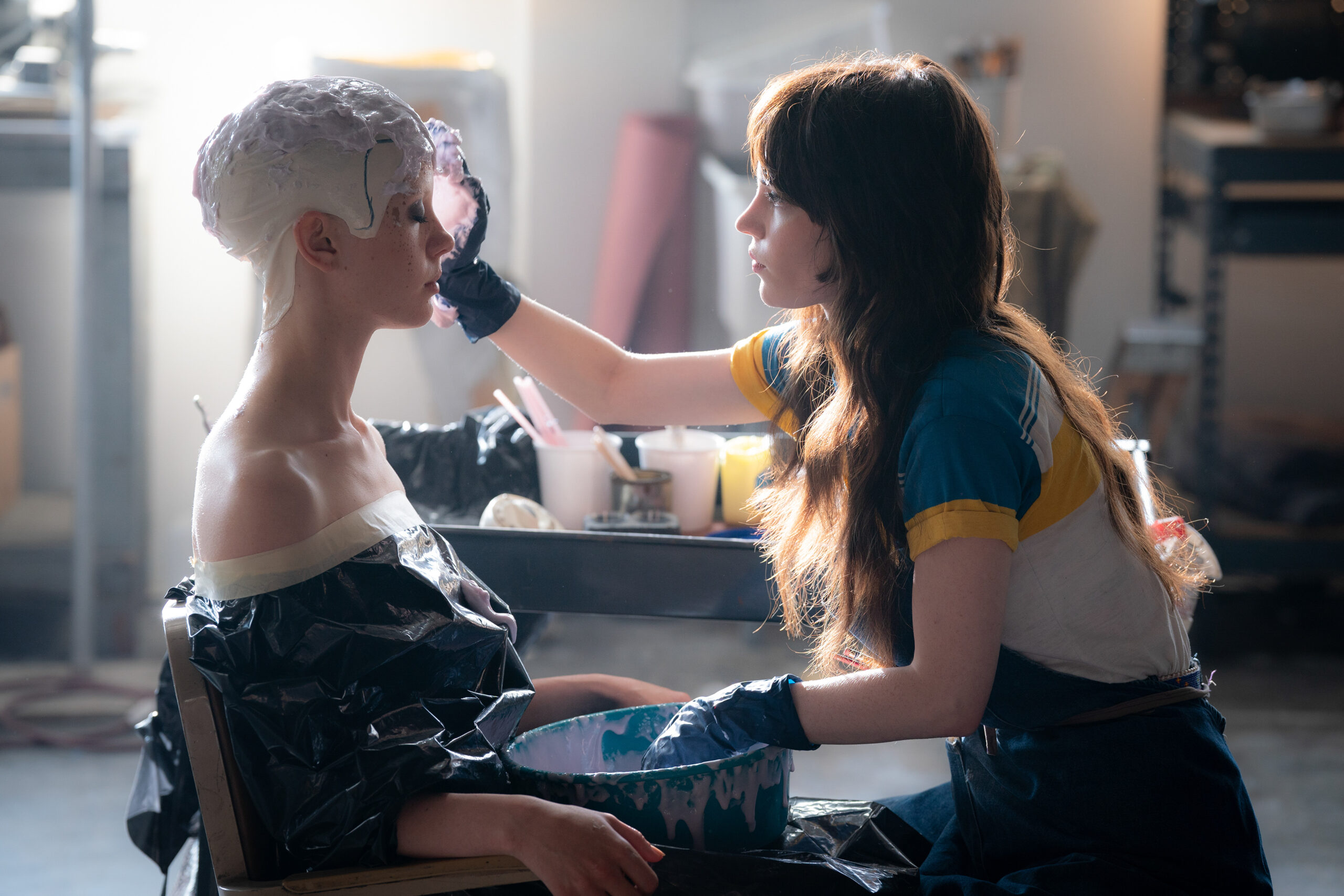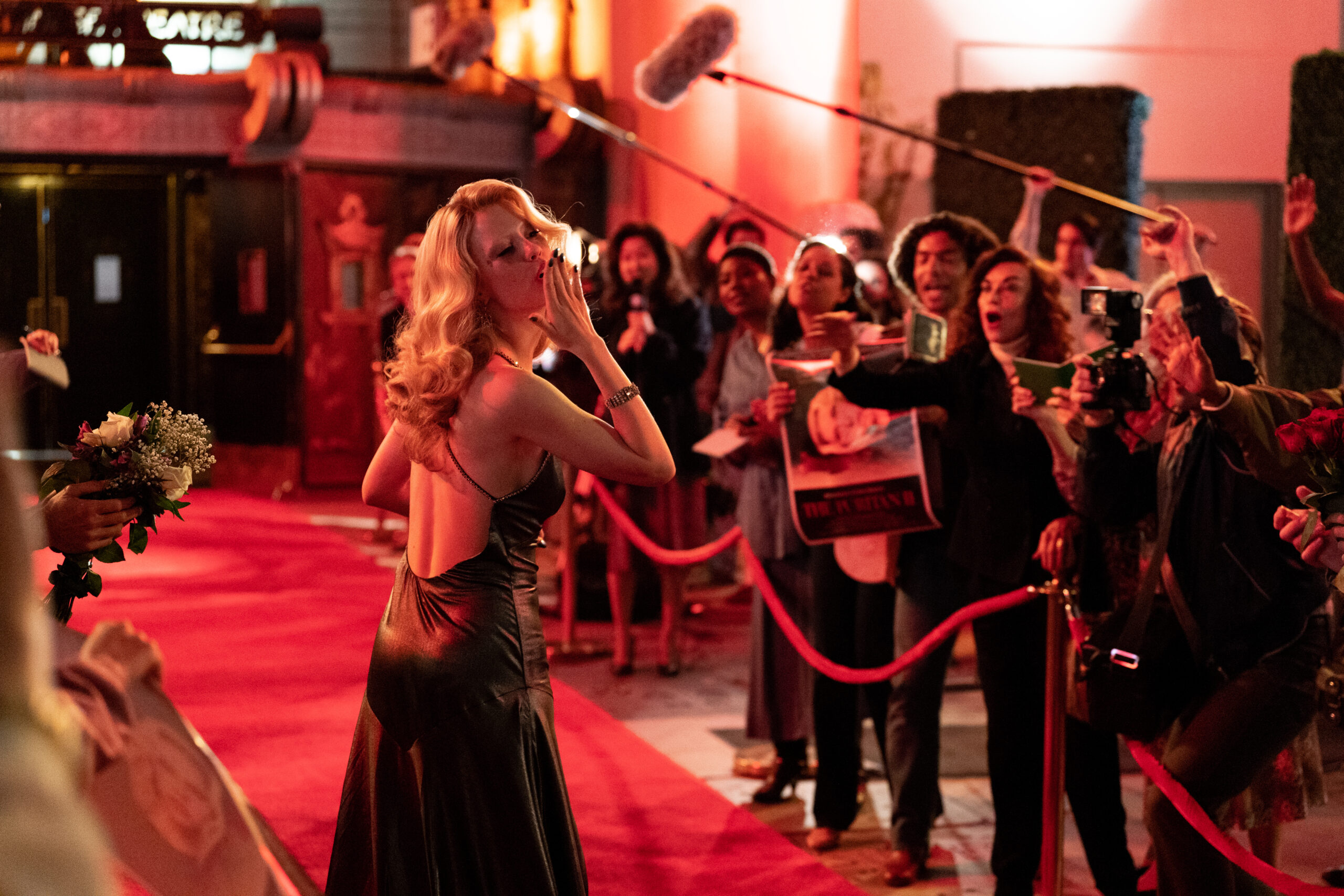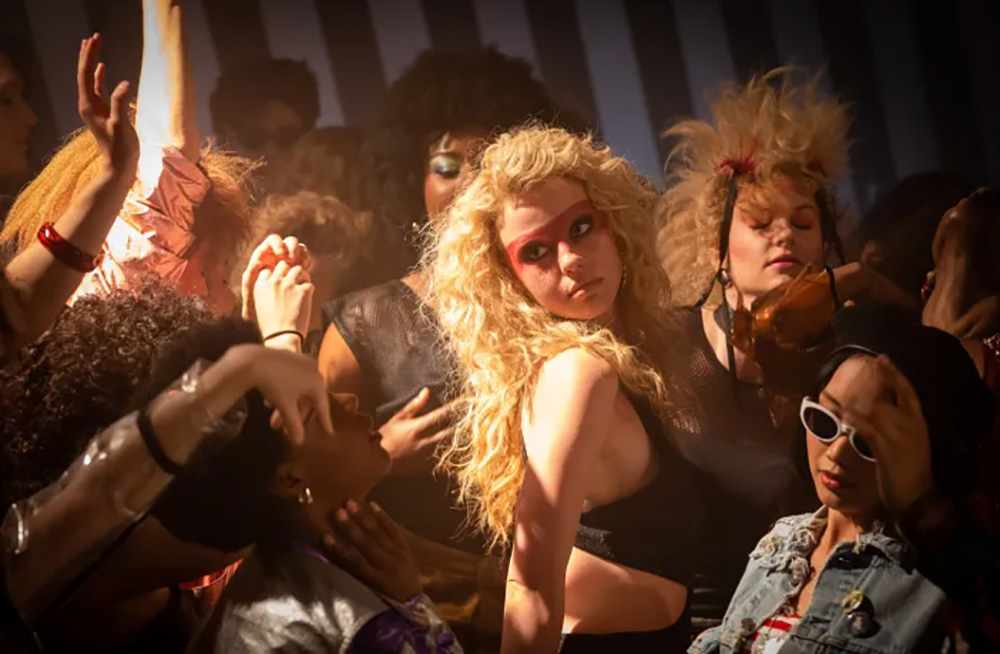Even if Mia Goth cements herself as this generation’s top scream queen in “MaXXXine,” the film does not conclude her character’s journey in the best way possible. Ti West indulges in ’80s horror references and many undercooked plot threads that leave much to be desired—the canvas becoming emptier as the film runs its course.
Ti West’s Trilogy of Throwback Slashers
Two years ago, Ti West created two horror hits back to back with genre fans and cinephiles craving more with “X” and “Pearl.” These were productions during the pandemic, with limited resources and locations. At a time when many pictures were halted, West and company isolated themselves in a New Zealand barn to smear blood across the canvas when theaters opened back again. And so they did. West crafted something fascinating out of a horror subgenre with less room for ingenuity than the previous ones he used to delve into. The films were nods to a specific time in cinema history, like the rise of slashers in the ’70s thanks to the release of “The Texas Chainsaw Massacre” and the use of technicolor in the post-silent film era of the ’30s and ’40s.
These films also made a star out of Mia Goth today’s generation’s top scream queen. Through various bloody set-pieces and chilling monologues, Goth proved she has the “gift of gab” when adapting to the genre. This was the beginning of a bright future for the rising actress and the revitalized filmmaker. The former was slowly proving herself with Luca Guadagnino’s masterful remake of “Suspiria” and Gore Verbinski’s “A Cure For Wellness.” Meanwhile, the latter struggled to envision a horror project that would put him on the pedestal of noteworthy American genre filmmakers. And he did so with these throwback slashers. However, fans’ significant interest and the box office’s success paved the way for this double bill to become a trilogy. Like many fans of the previous two, I welcome it with open arms.
There is more room to explore Maxine’s character. In addition, I wanted to see more of Goth. By this point, she has become a magnetic screen presence. So, West and Goth team up for a third film that serves as a curtain closer to Maxine’s journey. Titled after its lead character, with a play in words to the profession she wants to leave behind for the big screen, “MaXXXine” changes the scenery from ’70s Texas to ’80s Hollywood, switching its references from the works of Tobe Hooper to video nasties and Giallo flicks. While some lavish, horrific set pieces pump horror fans’ veins, the narrative feels like a side story. It deprives the film of developing a proper conclusion for the character people have grown to love.

Maxine Minx’s Rocky Journey on Becoming a Star
“MaXXXine” begins with a quote from Bette Davis that sums up her story in a nice little bow: “Until you’re known in my profession as a monster, you’re not a star.” It is set a few years after the “Texas Pornhouse Massacre” events, where the titular Maxine (Goth) and her adult film crew were haunted down by Pearl and her husband, Howard. Maxine was the only survivor of the murders. She escapes from the Texas countryside to the spotlight-filled Los Angeles in search of glamor, money, and fame. The scars from the past plague her daily living. She tries to hold her head high. Yet the malevolent acts that occurred in the barn are eating her alive, even though Maxine says everything is alright.
Maxine still works as an adult film actress. She hustles day and night at different locations to give herself the lavish life she deserves. But her big break might come sooner rather than later. After nailing an audition for the lead role in “The Puritan II,” Maxine leaves her porn industry days behind her in search of a more prominent spotlight to follow her steps. Through the horrors of the past and the longing for piety, Maxine finds herself attached to a project that will guide her to the life she wants. The film she is starring in reflects her journey throughout these films. It contains a sense of foreshadowing as the viewed-at “prude” becomes a symbol of purity, cleansing her past for a brighter future.
“MaXXXine” speaks about the exploitation of women through the lens of men, whether it is cinema or pornography. There is this mirroring between the two industries. People look at them as taboo or satanic. The world views both as denigrating equals. This is why we see many scenes of riots and people waving “Horror = Porn” signs. The latest slasher was being judged to the same degree as a hardcore porn flick. In his attempts at satire, Ti West ridicules the censorship of the times. Censors were banning very gory horror pictures, naming them video nasties. They saw the films and took out the overly violent scenes from them. In addition, he also mocks the overly religious crowd. He criticizes how these people deem everyone involved in those types of pictures as diabolic with the inclusion of the “Satanic Panic” in the narrative.

Ti West Gets Lost Amidst the Open Canvas and ’80s Setting
This thread does not go anywhere in the film, yet it alludes to some of West’s ideas while making “MaXXXine.” This tends to happen throughout the film’s run-time. Maxine’s trauma is put aside to connect the rest of the characters to her, and it does not cause an intriguing development in her story. The various film references, from the Bates Motel of “Psycho II” and “St. Elmo’s Fire” to William Friedkin’s “Cruising,” occupy one-half of the space. Meanwhile, the other half relies on a mishmash of ideas, none of which come to fruition. The only thing in Maxine’s way is a serial killer who is murdering innocent women around Los Angeles, leaving a pentagon in their bodies as a mark of his evil doings.
Upon further investigation by two cops, the killer is targetting Maxine and her close friends. A hunt for the star girl is in place. Horror, noir, and thriller tropes blend with one another in a forced, narratively incoherent manner. Private detectives dressed as Jack Nicholson’s character in “Chinatown,” a pair of bumbling cops, producers with a mercenary side, serial killers, indulgent filmmakers, and sex workers are all a part of this messy and chaotic cocktail mix of neon lights and 80s records. Does it all add up to a worthy conclusion? Not really. It’s not even close. Sparks of these ideas are scattered across the 80s-looking canvas that Ti West created in this film.
Of course, they are at face value, yet the themes are there for everyone to pick apart. The problem is that West crams way too many plotlines. This does not service these interesting ideas nor the character of Maxine Minx. While “X” and “Pearl” were, in their own right, studies of their characters, exploring the division between purity and immorality. Meanwhile, “MaXXXine” feels like a lazy example of that. West loses himself in the open canvas. He works best when the production is most restrained and limited. However, he does not know how to adapt to this bigger project. You notice this in the tonal and narrative disparity between the film’s lines. And while you appreciate his boldness, the film ends up as an incoherent mess.

“MaXXXine” hit theaters across the U.S. on July 3rd, 2024.


